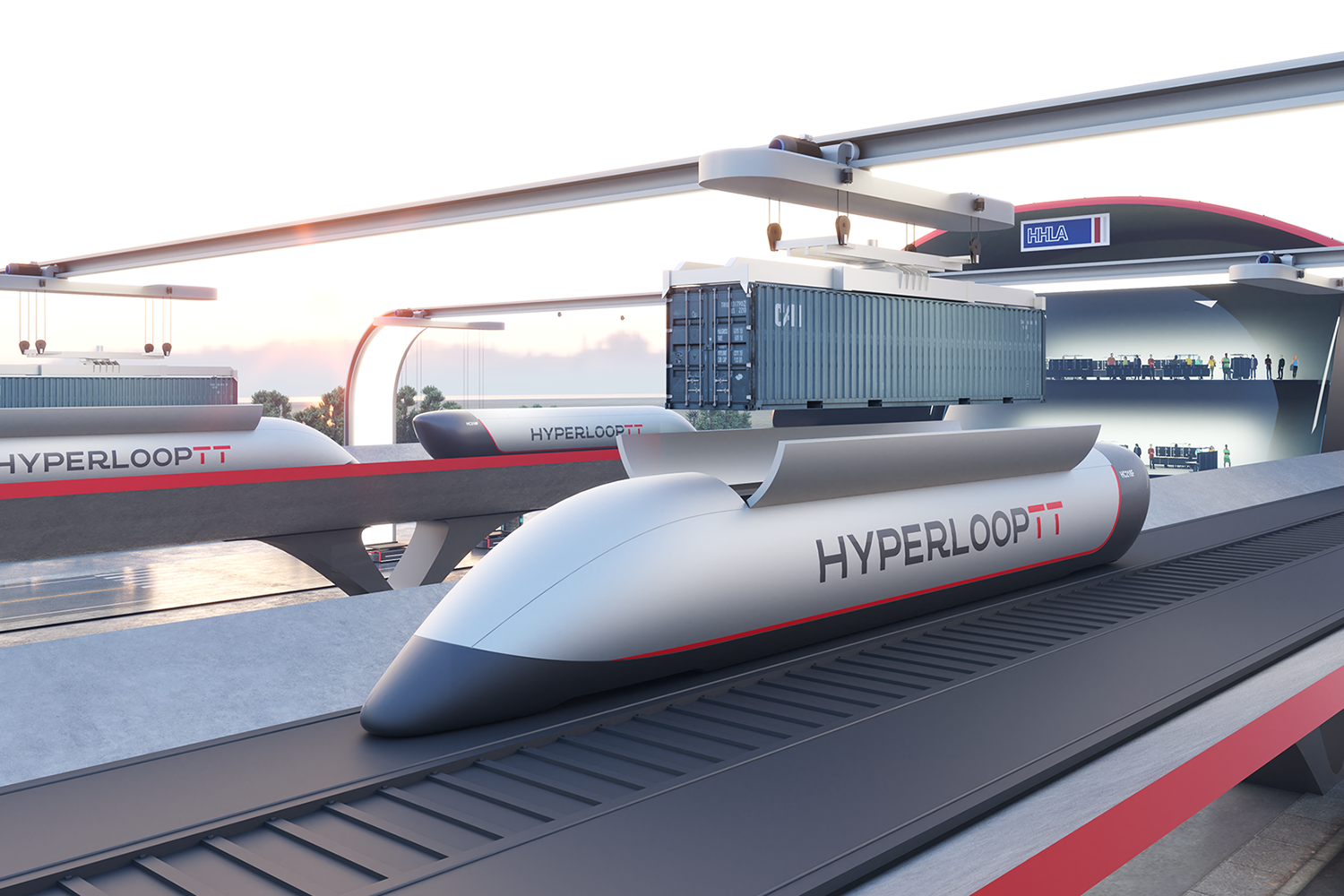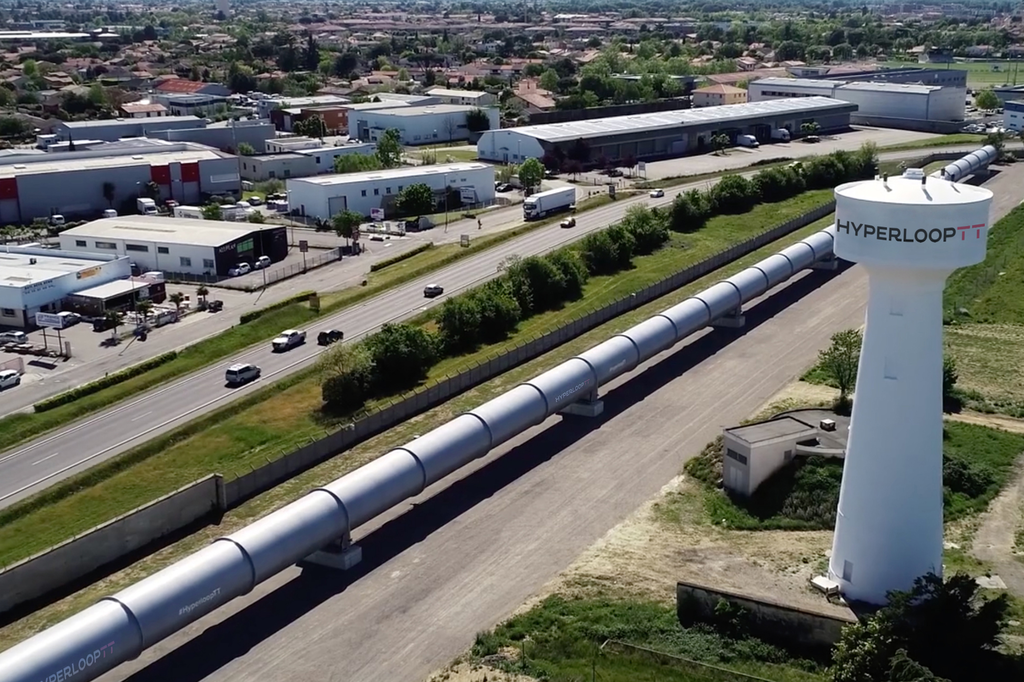Feature
How Hyperloop TT is pushing hyperloop tech
Jasleen Mann speaks to Andrés de León, Hyperloop TT CEO, about the future of hyperloop technology.

Hyperloop technology has many excited over the high-speed freight applications. Credit: Hyperloop TT
Last month there were reports that China was looking to build the country’s first hyperloop line between Shanghai and Hangzhou, with a 150km long tunnel.
The Chinese Academy of Engineering and rail authorities commissioned a “comprehensive assessment on the candidate construction sites for ultra-high speed pipeline maglev system demonstration line”.
Shanghai and Hangzhou, the two richest cities on China's east coast, emerged as winners, said scientists involved in the project in a report published in the Chinese-language journal Railway Standard Design.
A hyperloop is a novel high-speed transportation system for both public transport and freight transport.
Hyperloop systems are essentially a network of tubes that connect mobility hubs. Low are pressure in the tubes means that pods, or trains, can travel at high speeds due to lower friction and air resistance, aided by magnetic propulsion.
A hyperloop future?
American research company Hyperloop TT estimates that its hyperloop solutions are a fraction of the cost of traditional high-speed rail systems and can operate at a profit. The company has some notable technology that sets it apart from the competition.
The California, US-headquartered company, which has a research centre in Toulouse, France, made headlines seven years ago with ‘Vibranium’, a smart material developed for hyperloop applications.
The material is made of carbon fibre, with sensors embedded between its layers. Eight times stronger than aluminium and 10 times stronger than steel alternatives, the fuselage skin monitors and transmits critical information about temperature, stability and integrity.

The test tunnel at Hyperloop TT's Toulouse research facility. Credit: Hyperloop TT
Hyperloop TT’s magnetic levitation technology, called ‘Inductrack’, allows magnets to be arranged in a Halbach array configuration so that capsules can levitate over an unpowered but conductive track.
In 2018, Hyperloop TT signed an agreement with Tongren Transportation & Tourism Investment Group of the People’s Republic of China. This is Hyperloop TT’S twelfth agreement for Hyperloop TT and its third commercial agreement, following announcements in Abu Dhabi and Ukraine in 2018.
Hyperloop TT will provide technology, engineering expertise, and equipment while Tongren will be responsible for certification, regulatory framework, and construction.
Hyperloop TT and the local government of Tongren, in the Guizhou province in South West China, will define the route for the system. Financing will be through a public-private partnership, 50% of the funds will come from Tongren.
Regulating hyperloop technology
“The real challenge with hyperloop systems is not the technology, which is built on existing technologies, but the regulations needed to implement this new type of infrastructure,” says Andrés de León, Hyperloop TT CEO.
“This is why Hyperloop TT has been leading the way on regulatory efforts at the national, regional, and industrial level collaborating, with organisations like TÜV SÜD for safety certification, and Munich Re for insurance purposes.”
In October 2022, the European Commission published its Work Programme to state that it will work on a Regulatory Framework for hyperloop “to accommodate this high-speed, low carbon transport solution.” Standards are expected to be in place by the end of 2023.
In 2020, Hyperloop TT and its safety certification partners TÜV SÜD published the first safety guidelines for hyperloop systems. This guideline could inform part of the European Comission’s overall regulatory guidelines.
How sustainable are Hyperloops?
Beijing says it will have its hyperloop system connecting Shanghai and Hangzhou in operation by 2035. The hyperloop prototype is built and tested and is currently moving towards commercialisation.
“Hyperloops are considered a sustainable form of transportation primarily due to their energy efficiency and reduced carbon emissions. The systems use electric propulsion and magnetic levitation, reducing the friction encountered in conventional transportation and thus requiring less energy,” says de León.
“Additionally, their infrastructure is designed to incorporate renewable energy sources, like solar panels, allowing for potentially zero-emission operation. Moreover, the high-speed, high-capacity nature of hyperloops could significantly reduce dependence on other less efficient and more polluting modes of transport.”
We find scepticism seems to come from misinformation. Throughout history most new modes of transportation have been met with scepticism.
Hyperloop TT says its stations will allow passengers to access goods, on-demand services, and experiences. The stations will reflect the local culture and provide value to surrounding communities.
“We find scepticism seems to come from misinformation. Throughout history most new modes of transportation have been met with scepticism, whether it’s the first trains, automobiles, or planes,” says de León.
“This will change once commercial systems are built and in operation, which will be in the next few years. Recently, Italy announced that Hyperloop TT’s project near Venice was approved to move forward with the first stage. China is also aggressively building hyperloop. We expect a working commercial prototype to be up and running within the decade.”